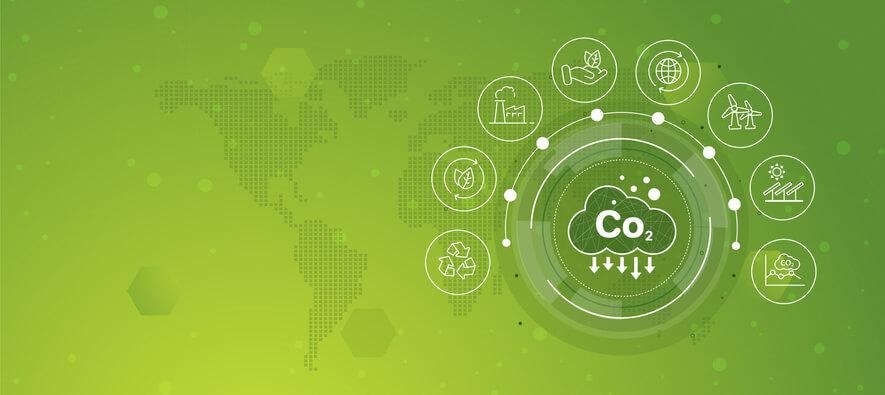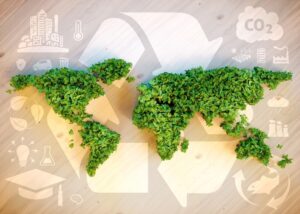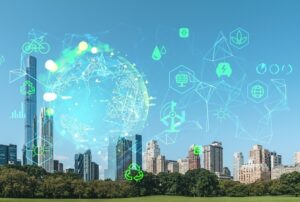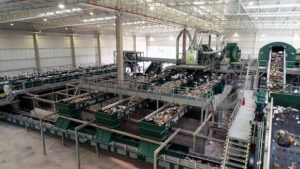
Since the third Conference of the Parties (COP) in 1997, countries around the world have defined a series of actions to mitigate the emission of greenhouse gases (GHG) in the atmosphere, creating the Kyoto Protocol. It is, at this moment, that the carbon credit is established, which is an important tool for cooperation among different countries.
To understand what a carbon credit is and how it is generated, we need to immerse ourselves a little more in the environmental and historical context.
WHY WE MUST OFFSET AND DECREASE OUR PRODUCTION OF CARBON AND OTHER GREENHOUSE GASES
From greenhouse effect to global warming, climate crisis and emergency, what all those terms have in common is the warming of the Earth due to the high emission of greenhouse gases and their low capture.
Current scientific studies have already come to the conclusion that this warming is also the result of human actions and, according to the Climate Observatory, we can see major impacts from these actions, such as the reduction of glaciers since 1950.
Among the human behaviors that generate global warming is the burning of fossil fuels, responsible for two thirds of the emission of greenhouse gases. However, reducing the burning is not enough; we need to think of ways to sequester the gases that have already been emitted.
The high production of carbon and other greenhouse gases has as its main result the warming of the Earth’s temperature, resulting in:
- Warming of the sea, extinguishing plant and animal life forms living there;
- Rising sea levels, causing natural disasters;
- Extreme heat events, threatening human, animal and plant life;
- Increased fires in green areas;
- Lack of water and dry soil preventing food growth.
THE ROLE OF THE KYOTO PROTOCOL IN THE CREATION OF THE CARBON CREDIT
The Kyoto Protocol is an agreement between the countries that are part of the COP. Negotiations began in 1997, at COP III, but it was only in 2005 that the protocol was put into effect, defining targets for the reduction of greenhouse gas emissions.
Understanding that not all countries had the same environmental impact and that those that were more technologically developed were also the biggest emitters, the Clean Development Mechanism (CDM) was created, which has made possible a joint work where an emitter financially supports a country which emits less gases, which, in turn, invests in technologies to further mitigate its GHG emissions.
This offset is made through carbon credits which, in short, are used as a bargaining chip, or parameter, to define the volume and amount that the country must sell or buy in order not to emit GHGs.
WHAT IS A CARBON CREDIT
The carbon credit is the bargaining chip used among the countries, through which the emissions from each country can be accounted for. Each carbon credit is equivalent to 1 ton of CO2 emissions.
When a country or company buys credit from another country, it obtains permission to emit 1 ton of CO2 or, in other words, it becomes an abatement for what will be emitted. The value is defined by the carbon market.
In Brazil, it is already possible to buy and sell carbon credits, but we still need to move forward in regulating the market, which promises to become a major contributor to the GDP, in addition to being a form of Payment for Environmental Services, encouraging environmental preservation.
Learn more about the Carbon Market
HOW IS IT POSSIBLE TO GENERATE CARBON CREDITS
The generation of carbon credits can take place in a variety of ways and it is very important that, at a global level, these actions complement each other in the fight against global warming. See some of the solutions that sequester or prevent GHG emissions:
1. Regenerative and soil management systems
The regeneration of degraded areas and soil management in agricultural crops and in the agricultural industry is one of the ways to generate carbon credits, since the plants themselves have the ability to sequester carbon through photosynthesis.
This is also an alternative to prevent the advance of deforestation areas, which generates even more GHG emissions.
2. Waste management
Waste management is responsible for 4.3% of greenhouse gas emissions, but nowadays there are technologies such as ecoparks implemented by Orizon, which, when treating decomposing waste, capture gases, especially methane, transforming it into an energy matrix.
This is a powerful example of the circular economy, where something that was once a problem can now be used as an environmental and economic benefit.

3. Diversification of the energy matrix
Worldwide, most energy is generated from non-renewable sources, such as coal burning, and this is such a huge problem that it was one of the most important agendas at COP 26.
In Brazil, there already are good energy alternatives when we talk about GHG emissions, such as hydroelectric or wind energy. But we believe that transforming waste into renewable energy, such as biomethane, is an alternative that, in addition to mitigating the emission of greenhouse gases, is also a solution for waste management.
At an ecopark like Orizon’s, having an 870 ton/day of plant processing capacity, for example, it is possible to generate 4 million tCO2 eq/year of carbon credits and generate 800 Mwh/year of energy per renewable sources, being capable of supplying power to a city having 1 million inhabitants.




